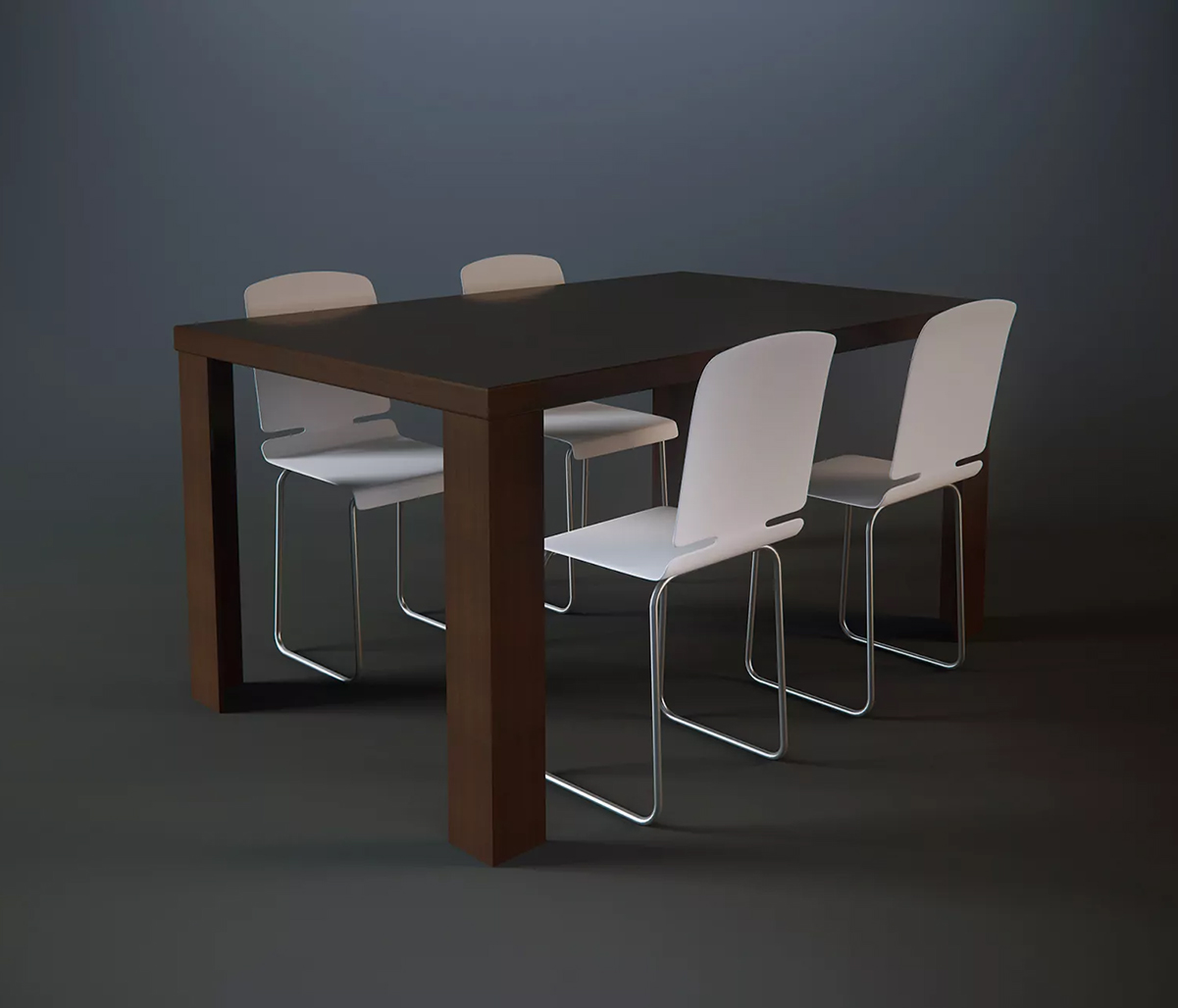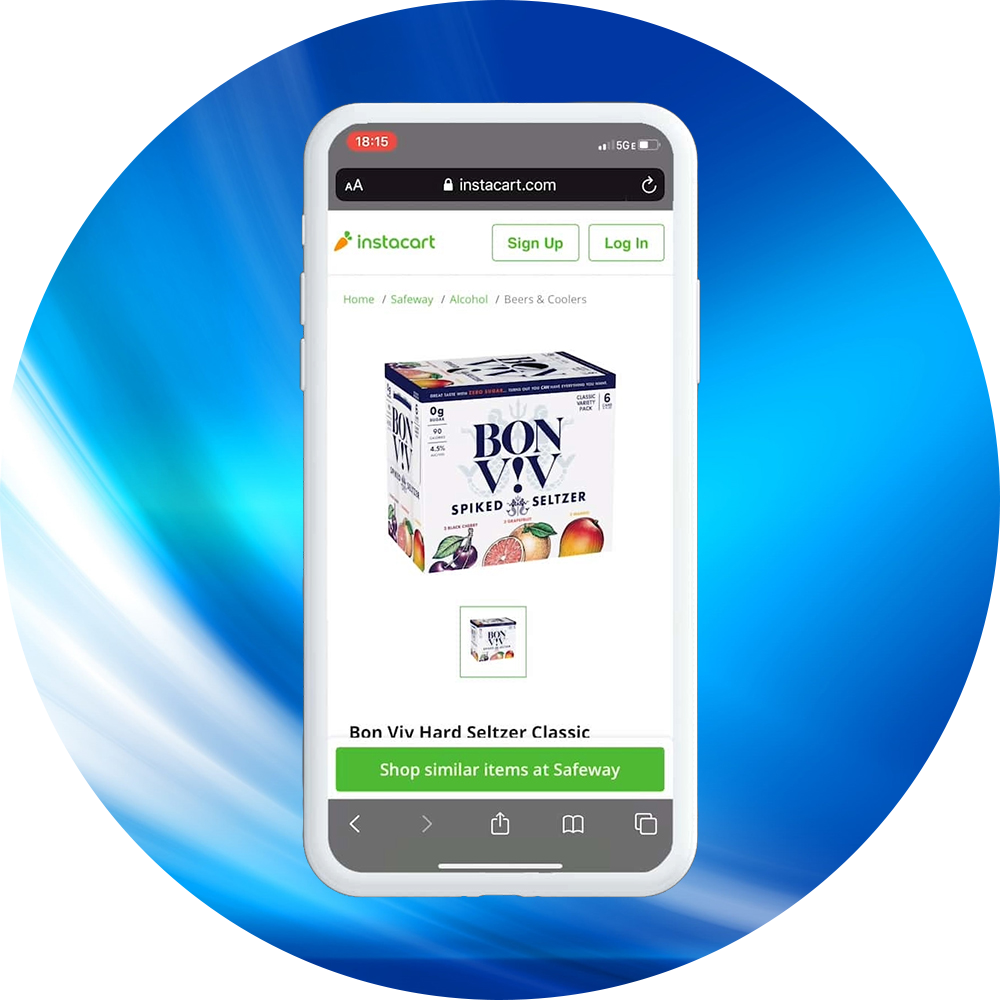While augmented reality advertising is a relatively recent addition to the advertising landscape, it is experiencing rapid growth. Projections suggest that 2025 global AR ad revenue will reach $6.68 bn, marking a significant surge from last year.
Augmented reality (AR) offers a unique avenue for executing viral advertising campaigns. Through its interactive and personalized experiences, AR fosters emotional connections between users and brands.
In this article, Program-Ace, as an augmented reality app development company, offers many ways to incorporate augmented reality into your advertising strategy, which can be essential, especially if your goal is to establish lasting customer relationships rather than merely driving one-time purchases.
What Is Augmented Reality Advertising?
Augmented reality advertising is a growing approach that leverages AR technology to enhance consumer experiences and offer detailed brand information. It overlaps 3D models or virtual objects onto a smartphone's camera feed.
For instance, a brand may place QR codes or scannable images in their storefront. When scanned with a smartphone camera, these markers trigger a pop-up leading to a virtual try-on screen. Users can then experiment with different items virtually before making a purchase.
Other avenues exist while mobile platforms remain the predominant channel for distributing augmented reality Advertising. For instance, platforms like Facebook and Instagram, collaborating with major brands such as Michael Kors, Sephora, and Pottery Barn, are experimenting with integrated augmented reality Advertising.
These augmented reality ads will appear in users' news feeds alongside traditional advertisements, allowing customers to visualize products instantly through virtual try-on features. Additionally, large-screen augmented reality advertisements are becoming increasingly common. These ads are typically displayed on screens in high-traffic areas such as public transport stops or shopping centers.
Augmented Reality Advertising vs. Traditional Advertising
Augmented reality Advertising introduces a new dimension to consumer engagement, characterized by interactive and immersive experiences. This shift from traditional advertising methods prompts a comparison between the two approaches. Exploring the differences between augmented reality Advertising and traditional methods shows their distinct impacts and advantages.
| Aspect | AR Advertising | Traditional Advertising |
| Interactivity | Information is personalized and is provided upon user request. | Viewers only receive the information one-way, non-interactive. |
| Accessibility | Advertising relies on internet-connected devices, ensuring a wider reach. | Advertising is limited to specific mediums and may not reach audiences without internet access or electronic devices. |
| Targeting | Advertising allows for precise audience targeting, ensuring ads are shown to interested parties. | Advertising targets broader audiences, potentially missing out on specific demographics. |
| Information Retrieval | Users can quickly obtain additional information by clicking on landing pages. | Viewers must seek out further information, which may be tedious. |
| Medium Diversity | Advertising primarily relies on online platforms. | Advertising encompasses various mediums, such as print, television, and radio, each with its audience. |
The immersive nature of AR experiences can significantly enhance advertising effectiveness, driving positive business outcomes. It underscores the value of targeting highly engaged audiences, offering advertisers a unique advantage over many platforms.
Advantages of Augmented Reality in Advertising

In the current era of advertising saturation, consumers are increasingly immune to traditional marketing tactics. Native advertising, unlike conventional display ads, has proven effective in captivating genuine interest in products by leveraging subtle integration. Let’s explore why companies tend to use AR more in their advertising campaigns.
Expanded brand reach
Predictions show the global smartphone user base will rise to 7.7 bn by 2027, with the overall mobile phone market expected to grow at a CAGR of 6.8% through 2031.
Thanks to the ubiquity of AR technology across mobile devices, customers can seamlessly integrate virtual products into their real-world environments using simple links or QR codes, enhancing their shopping experiences with a mere tap of a button.
Improved customer experience
Augmented reality advertising technology empowers marketers to deliver distinctive and personalized customer experiences. Through AR, marketers can develop product demos that enable customers to virtually test products before committing to a purchase. This enhances the customer experience and minimizes the chances of returns.
Increased engagement
Augmented reality empowers marketers to craft interactive experiences that surpass traditional advertising methods in engagement. Through AR, marketers can offer customers immersive experiences that are memorable and easily shareable.
Increased sales
Augmented reality boosts sales by offering customers a clearer understanding of a product's features and benefits. It allows customers to visualize how a product functions and fits into their lives, facilitating their decision-making process. A user spends 5 to 10 minutes customizing a product, viewing it from all angles in 3D, and even projecting it into their own space using augmented reality advertising. This immersive experience significantly increases the likelihood of the user adding the product to their cart — by approximately 40%.
Competitive advantage
As highlighted earlier, AR remains a relatively novel technology, and many marketers have yet to integrate it into their strategies. However, those who leverage AR can gain a competitive edge, setting themselves apart from competitors.
Challenges of Augmented Reality Advertising
AR marketing campaigns potentially transform customer experiences, engagement levels, and brand perceptions. However, like any marketing technology, it comes with its own set of challenges and considerations. Here are some top ones to remember while considering augmented reality marketing strategy:
1. Technical Challenges
Compatibility issues. Ensuring seamless performance across various AR devices and platforms can be challenging due to differing technical requirements.
Quality assurance. AR experiences may encounter technical glitches and deliver poor user experiences without expert development and testing.
2. User Experience Considerations
Complexity. AR experiences may appear daunting to users unfamiliar with the technology, underscoring the importance of intuitive design and user guidance.
Accessibility. AR campaigns should be inclusive to all users, including those with disabilities implementing text for images, voice commands, etc.
User-centric approach. AR must serve a purpose and provide tangible benefits to users, necessitating a focus on audience needs and preferences.
3. Development Considerations
Expertise. Developing AR campaigns requires specialized skills to ensure successful execution and avoid potential issues.
Maintenance. Regular updates and maintenance are essential to ensure continued performance across evolving software and hardware environments.
Content creation. High-quality AR content demands 3D modeling, animation, coding, and multimedia production expertise.
4. Alignment with Strategy
Integration with brand messaging. Ensuring that AR campaigns align with overall brand messaging, values, and audience preferences is crucial for consistency and resonance.
Measurement of success. Defining clear metrics and tracking mechanisms to measure the impact of AR campaigns on marketing goals is essential for evaluating effectiveness and informing future strategies.
What Are the Main Types of Augmented Reality Advertising?
The suitability of AR depends on the nature of your products or services. Below are five distinct types of AR, their functionalities, and an example of their application.
1. Markerless AR
Markerless AR operates without physical markers like QR codes, relying instead on location-based data such as GPS or mobile device accelerometers. It detects and tracks the user's environment to overlay virtual content based on spatial relationships and object orientation.
Users scan their surroundings using a mobile app or webpage, and digital content appears on surfaces like floors or walls. Despite being complex and costly to set up, augmented reality outdoor advertising is popular in online shopping and gaming for its ease of use. It includes projection-based AR, superimposition-based AR, and location-based AR.
2. Marker-based AR
Marker-based AR, also known as image recognition AR, operates using a QR code or visual marker, such as a fiducial marker, to initiate the interactive experience. Users scan the marker with their smartphone camera, triggering visual effects. They can then move their device around the static marker to view the digital image in 3D on their screen.
However, augmented reality mobile advertising has limitations. It requires mobile devices like smartphones or tablets, and users may need to download a dedicated app, such as Google Play Services for AR for Android devices, or utilize built-in AR support available on Apple iPhone devices with iOS 13 or higher.
3. Projection-based AR
Projection-based AR utilizes projectors to project 3D imagery or digital content onto flat surfaces such as walls, floors, or objects. While it doesn't create fully immersive environments, it excels in showcasing holographic elements for events and movies.
This technology is ideal for in-person events like store openings or pop-up shops, where holograms can be displayed to captivate and engage audiences.
4. Superimposition-based AR
This type of augmented reality Advertising replaces or enhances existing physical items with digital content. It identifies objects or features in the user's environment, such as book covers or product labels, and overlays relevant digital information onto them. In retail settings, this technology can guide customers and provide product information. Virtual arrows can be overlaid onto the environment to direct shoppers to specific products. A smartphone camera of a product can reveal virtual overlays with details like price, features, and reviews.
5. Location-based AR
Location-based AR utilizes geographic data to deploy digital content at precise locations, making it a markerless AR variant. It's commonly employed in gaming, as seen in Pokémon Go. For retailers, location-based AR offers opportunities to gamify the shopping experience. For instance, businesses could design virtual scavenger hunts within their stores, enticing customers to explore and earn rewards.
Top Industries Leveraging AR in Advertising Campaigns
AR has increasingly permeated various aspects of our daily routines in recent years. Its applications range from visualizing furniture in a home setting to experimenting with different hair colors virtually, offering consumers a preview of products before committing to a purchase.
AR is not limited to specific industries. It holds potential for diverse sectors, including landscaping and jewelry retailing. We have identified the primary industries that need AR-driven shopping experiences and outlined strategies for implementing augmented reality in business to harness this technology effectively.
The beauty industry has integrated AR into advertising and shopping experiences. Shoppers can experiment with lipsticks, foundations, and eyeshadows from their homes using the front-facing camera. While some products like skincare and fragrance require in-person testing, Estée Lauder found a creative solution.
The brand launched a gyroscopic Snapchat filter that projected floating perfume bottles into users' surroundings, allowing them to tap on a bottle to trigger an immersive experience inspired by the fragrance.
Home furnishing uses augmented reality advertising to enable customers to explore all aspects of a piece, including its appearance in their homes, before purchasing. The Swedish furniture retailer IKEA introduced IKEA Place, an augmented reality app.
This app lets users overlay true-to-scale 3D models of IKEA furniture in their living spaces, previewing how the pieces would look before buying. Additionally, users can browse through specially curated furniture collections and product highlights for design inspiration.
By leveraging AR technology, the tourism industry offers advertisers captivating experiences that transport viewers to their ideal getaways. The possibilities for out-of-home augmented reality advertising in this sector are limitless. For instance, a travel agency could craft a campaign featuring rich media ads that users can interact with to explore popular destinations virtually.
Moreover, AR has immense potential to enhance travel experiences. Some developers have devised augmented reality tourist destination apps that enable users to point their cameras at nearby landmarks and businesses, instantly accessing relevant information about these locations.
In the fashion industry, utilizing AR for virtual try-ons has become a prevalent tactic in advertising. By leveraging the front-facing camera, the technology overlays clothing onto the shopper's image, providing a realistic preview without the need to visit a physical store. Advanced AR programs can even adjust for lighting and body shape, enhancing the accuracy of the virtual representation.
Additionally, AR is a powerful tool for generating excitement around product launches. For instance, Nike and AKQA collaborated on an AR experience in 2020 to promote their Air Max 2090 sneaker line in Brazil. The campaign aimed to engage a broader audience beyond dedicated sneaker enthusiasts and achieved remarkable success.
The healthcare industry benefits from VR and AR technologies as well. Professionals across various medical fields, including sales, marketing, and advertising, are exploring their potential applications. Augmented reality pharmaceutical advertising holds particular promise in sales, facilitating more precise and more accurate communication between sales representatives and healthcare professionals.
Moreover, augmented reality pharmaceutical advertising allows professionals to virtually "test-drive" medical equipment, eliminating the need for physical demonstrations. This simplifies logistics, reduces manufacturing costs, and enables healthcare providers to gain hands-on experience with products before making purchasing decisions.
FurnitARe Augmented Reality Furniture — Explore our Portfolio Project

Program-Ace has created a cross-platform augmented reality application for iOS and Android using ARKit & ARCore technologies. With the power of Unity engine, we managed to create a robust, free product for the interior design industry.
Showcasing AR Advertising Examples
Augmented reality presents an exciting avenue for brands and companies to craft captivating marketing experiences for advertising campaigns. Let’s overview some inspiring augmented reality advertising examples for your next campaign.
"5G Built Right for Snapchat" campaign

Verizon collaborated with the band The Black Pumas and Snapchat for the "5G Built Right for Snapchat" campaign. The lead singer performed in AR before the New York Public Library. The promotion aimed to highlight the 5G network and new Snapchat features.
Verizon customers with 5G smartphones could attend the AR concert on location by scanning the building through Snapchat's landmark filter. Lead singer Eric Burtons appeared and performed the hit song "Colors," while the building and landscape were enriched with various colors and flowers.
"Pokémon Smile" AR app

The Pokémon Company developed the "Pokémon Smile" AR app to help children learn proper and regular teeth brushing using one of its beloved characters. Equipped with a cute Pikachu hat through face tracking, kids rescue Pokémon from cavity-causing bacteria by brushing their teeth correctly.
With over 100 Pokémon to catch, the app has garnered over 500,000 downloads, received over 7,500 five-star reviews, and earned attention from numerous YouTubers. Pikachu effortlessly outshines the competition, securing its spot with a sparkling reputation.
"Newstalgia" campaign

Pizza Hut has introduced a unique feature in its "Newstalgia'' campaign, allowing customers to play Pac-Man in augmented reality. Users can access the game by scanning a limited QR code on the pizza box with their mobile devices and win an Arcade1Up Pac-Man machine cabinet.
With the $10 Tastemaker, customers can indulge in their favorite flavors. For just $10, diners can customize a large pizza with up to three toppings, choosing from 17 mouthwatering options. With a staggering 680 possible topping combinations, there's something to please every palate.
WebAR retail advertising campaign

Bon and Viv, a hard seltzer company, collaborated with Aircards, a WebAR agency, to launch a web-based augmented reality (WebAR) retail advertising campaign in Los Angeles and San Diego. Users encounter a 3D vending machine overlaid in the real world, enabling them to purchase a drink from a nearby store or order it online for home delivery within a few hours.
By scanning a QR code, users activate an immersive experience that elevates mural graphics with captivating 3D content. Through this innovative technology, consumers encounter a virtual vending machine with interactive animations, allowing them to choose and dispense their preferred BON V!V Spiked Seltzer flavor.
How to Create an Effective Augmented Reality Marketing Campaign
If you want to experience the full potential of AR in digital marketing, follow these essential steps:
1. Define clear objectives
Determine your goals for the AR campaign, whether it's boosting brand awareness, driving sales, or enhancing user experience.
2. Understand your audience
Tailor the AR experience into software development for marketing and advertising to suit your target audience's preferences and behaviors, considering their tech proficiency and interaction patterns with your brand.
3. Create engaging content
Design interactive and memorable AR experiences that add value to consumers' interactions with your brand.
4. Integrate with other marketing channels
Ensure AR integrates with social media, email marketing, and other digital channels to maximize its reach and impact.
5. Optimize for mobile
Given that most AR experiences are accessed via smartphones, optimize or build your AR application.
6. Measure and analyze
Implement tracking and analytics to gauge the campaign's performance against objectives, using data to refine future strategies.
7. Leverage social sharing
Encourage users to share their AR experiences on social media, extending the campaign's reach and adding a viral element to your marketing efforts.
8. Consider scalability
Develop the AR campaign with scalability in mind, allowing for content updates and long-term audience engagement.
When devising an augmented reality marketing campaign, various approaches exist to consider. We recommend prioritizing your target demographic's preferences and assessing your timeframe and financial resources to determine the most fitting strategy.
Evaluating the Costs of Augmented Reality Advertising
Regarding augmented reality development costs, several factors come into play, typically defined by the specific tasks involved and the time allocated to their execution. Here's a breakdown of the main components and considerations:
1. Design:
- This phase consists of creating the user interface (UI) and user experience (UX) to establish a cohesive visual style aligned with the brand's identity within the AR application.
- The design aspect ensures the AR experience is engaging and intuitive and reflects the brand's image.
2. Programming:
- Programming encompasses front-end (client-side) and back-end (server-side) development tasks.
- Modern development processes often adopt iterative approaches, allowing for continuous evaluation and refinement after each development cycle.
- This iterative approach enables clients to provide feedback, address issues, and prioritize implementing desired features.
3. Testing:
- Thorough testing is essential to ensure the functionality and stability of the AR application.
- Testing phases may include functional testing, usability testing, performance testing, and compatibility testing across different devices and platforms.
- Neglecting testing can result in user dissatisfaction and potential technical issues post-launch, highlighting the importance of allocating resources for comprehensive testing within the budget.
Overall Cost Considerations:
- Rates for AR development services vary significantly among companies, with average hourly rates typically falling from $110 to $170.
- Considering the project's scope, complexity level, and additional features or customization requirements is essential when estimating overall costs.
- While budget constraints are a factor, prioritizing quality and ensuring a seamless user experience through proper design, development, and testing is crucial for the success of the AR project.
Exploring Augmented Reality Advertising with Program-Ace
Augmented reality advertising offers marketers a significant advantage, offering engaging, interactive, and efficient ad experiences. With numerous companies already adopting this cutting-edge technology, the trend is expected to continue growing.
If you're ready to explore augmented reality advertising, don't hesitate to contact our team. Program-Ace, a leading software development service provider, is here to help you turn your brilliant ideas into reality. Don't hesitate to reach out to us for more information.













